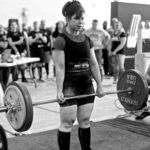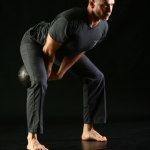Kettlebell ballistics have very little to do with the kettlebell—and everything to do with how you move your body. When it comes to rhythmically repetitive power work like swings, snatches, and cleans, your best performance comes when you’ve synced your breath to the movement pattern. Better, more athletic swings mean you get more out of your training time and practice.
“Rhythm and timing are the two things which we all must have, yet no one knows how to teach either.” Bobby Jones
Bobby Jones was referring to the golf swing, however, there are many athletic movements that come together via rhythm and timing. Serving in tennis, batting in baseball, throwing (whether a ball, punch or kick), and of course, our kettlebell ballistics. The swing, clean, and snatch can all be examples of rhythmically repetitive power work. Properly timed they are athletic, crisp, and (dare I say) beautiful.
What coordinates the rhythmically repetitive aspect of the swing is the timing of the breath with a forced exhale at the hip extension and a sharp inhale during the hike or eccentric action of the movement. The hip action of the swing is the hip action of the clean and the snatch, so for simplicity’s sake, we will focus on the swing.
Breathing Strategies
Your breathing pattern should “match” your goal. For example, for stretching and relaxation, we use what is known as an anatomical breathing match. As the body gets compressed (think leaning forward to stretch the hamstrings), air is released or forced out. As the body extends, air is drawn in (think standing up from a toe touch and inhaling). For the strength, stability, and power of the swing, we use the biomechanical breathing match. A biomechanical breathing match means we inhale while getting compressed (creating intrabdominal pressure) and exhale while extending (resulting in a more stable and braced finish).
Once the correct breathing match or strategy is identified—biomechanical in the case of the swing or hip action of the ballistics—we want to sync up the rhythm of the breath to the pattern of the movement. To create the intrabdominal pressure needed for stability during the eccentric loading (which can reach 2.5-3x bodyweight or more), we need to time our sharp nasal inhale for just before the full eccentric action occurs. A brief breath hold happens as the reversal of the movement occurs. This rapid deceleration and redirection of force in the swing is just one reason it is such a power exercise. Then on the hip extension, a forced exhale will occur as the hips fully extend. This can begin prior to the full hip extension but should “finish” timed with the extension of the hips. I like to think of getting trapped between my glutes and abs at the top of the swing so air gets knocked out.
Enjoy the float. And as the arms reconnect to the ribs and the eccentric action begins again, the breath cycle will repeat. See the video (you never know when someone is recording you in slo-mo).
The rhythm and timing get out of sync when the exhale is late, timed not with the hips but when the kettlebell reaches its finish. For the swing, this could mean an exhale when the arms and kettlebell are at shoulder height or in the snatch it means the exhale is timed for the overhead lockout. These mistimed exhales can also indicate a lack of connection of the arms to the body during the ballistics. A lack of connection of the arms to the body during hip extension results in a loss of power. The only way to get the full energy and power of the hips to transfer to the swing or snatch is to keep the arm(s) connected to the body until the power from the hips actually “pops” them off. Just like cracking a whip, if the sequence gets disconnected then there is a loss of power and efficiency.
Sync your breathing and find the rhythm and timing in your kettlebell ballistics.








There are few people who can analyze movement and put words to that experience as clearly as you do. It’s very refreshing and inspiring! Thanks!
Thank you Sergio – 17 years in and I learn something every time I swing.
What a crisp swing, I hope to one day have a swing like this. Thanks for the article.